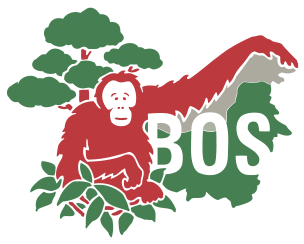New figures: palm oil destroying Malaysia’s peatswamp forests faster than ever
Wetlands International: 1 February 2011
An increasing part of Malaysia’s palm oil is produced at the account of huge areas of tropical peatswamp forests. Especially in the Malaysian state of Sarawak, expansion of oil palm plantations may lead to the complete loss of these vast, unique forests by the end of this decade. This is shown by new figures from Wetlands International and Sarvision.
Palm oil and deforestation in Sarawak
Malaysia takes care of 45% of the world’s rapidly expanding palm oil production. As Peninsular Malaysia provides little room for expansion, new palm oil plantations in Malaysia are almost all established in the State of Sarawak on Borneo[1]; especially in forest areas.
Two thirds of Sarawak’s peatlands were until recently covered by thick, biodiversity-rich rainforest. Between 2005-2010 almost 353,000 hectare of the one million hectare peatswamp forests were opened up at high speed; largely for palm oil production. In just 5 years time, almost 10% of all Sarawak’s forests and 33% of the peatswamp forests have been cleared. Of this, 65% was for conversion to palm oil production[2].
Marcel Silvius, Wetlands International: “As the timber resource has been depleted the timber companies are now engaging in the oil palm business, completing the annihilation of Sarawak’s peat swamp forests.”
Unique new information
Malaysia has never provided verifiable information on land use in relation to soil type or deforestation. Official Malaysian government figures now appear to have given a far too optimistic picture; stating that only 8-13% of Malaysia’s palm oil plantations were situated on carbon rich peat soils; 20% for Sarawak. Two studies; one conducted by global environmental organisation Wetlands International and one by the remote sensing institute Sarvision show that a rapidly increasing proportion of Malaysian palm oil is produced on peatlands, leading to deforestation and degradation of organic soils. Wetlands International and Sarvision used satellite images combined with existing data and field surveys to complete the picture.
The new studies conclude that 20% of all Malaysian Palm oil is produced on drained peatlands[1]. For Sarawak, this is even 44%. For recently established plantations, the percentage on forested peatswamps is even higher.
Niels Wielaard, Sarvision: “This is the first time that detailed and verified figures on deforestation and peatswamp conversion come available for Sarawak. Free availability of satellite imagery and tools such as Google Earth are revolutionizing forest monitoring.”
Loss of unique species
Malaysia’s peatswamp forests are home to many endangered and endemic species and subspecies[5], including enigmatic species such as Borneo Pygmy elephant (Elephas maximus borneensis), Sumatran Rhino (Dicerorhinus sumatrensis), Bornean Clouded Leopard (Neofelis diardi borneensis), Malayan Tapir (Tapirus indicus) and Proboscis Monkey (Nasalis larvatus) as well as less known endangered species such as the Storm’s Stork (Ciconia stormi), False Gharial (Tomistoma schlegelii) and the Painted terrapin (Batagur borneoensis). The black waters of the peat swamps are known for the highest numbers of freshwater fish species in the world, including the Asian Bonytongue (Scleropages formosus).
The peat swamp forests of north Borneo represent a unique vegetation type characterized by the Alan tree (Shorea albida) as well as the valuable but endangered timber species Ramin[5]. This forest type has been wiped out in Sarawak and the only remaining examples now remain in Brunei. The peat swamp forests have not been intensively studied, and many undiscovered species are feared to have been lost.
Alarming increase of CO2 emissions
Malaysia used to have about 2.5 million ha of peatland forests. Conversion and drainage of these natural carbon stores causes a rapid decomposition and subsidence of the organic soil leading to huge carbon dioxide emissions, lasting for decades. Very cautious and conservative estimates put greenhouse gas emissions from palm oil plantations on peat at 40 tonnes of CO2 per hectare per year[3]. Using this very conservative estimation, the 510,000 ha of peatlands in Malaysia drained for palm oil production thus cause the release of some 20 million tonnes/CO2 annually. However, twice this amount is more likely[4].
Biofuel demands as direct and indirect driver
Palm oil production increases rapidly; for markers all over the world. The rapid expansion of oil palm plantations is a result of the global increase in demand for vegetable oil; for food and for a large part also for biofuels. European targets to increase the use of biodiesel is causing a rapid increase of the global demands for vegetable oil crops. This growth in demand leads to a massive (indirect) land use change (ILUC); especially in Southeast Asia, including in carbon rich peat swamp forests. The conversion of these areas increases greenhouse gas emissions and thus fuels climate change. Biodiesel use that does not prevent these indirect land use impacts is far from sustainable and may cause much larger emissions than the use of fossil fuel diesels.
Call for action
The production of palm oil is welcome only if expansion can be done in a sustainable way. Wetlands International calls for a complete ban of palm oil production on peatlands and for a halt on further conversion of natural areas for this crop. Instead development should focus on the millions of hectares of degraded (non-peat) areas in South-east Asia. Companies that use palm oil should demand for this. In addition, Wetlands International calls for an end to incentives for biofuels in the EU that result in direct and indirect land use change like we now see in Malaysia.
[1] 2010, Wetlands International – Malaysia, Quick Scan of Peatlands in Malaysia.
[2] 2011; Sarvision, Impact of oil palm plantations on peatland conversion in Sarawak 2005-2010.
[3] John Couwenberg et al., 2009, Global Change Biology (2010) 16, 1715–1732, doi: 10.1111/j.1365-2486.2009.02016.x, Greenhouse gas fluxes from tropical peatlands in South-east Asia
[4] Hooijer et al. in Biogeosciences 7, 1505-1514, 2010 CO2 Current and future CO2 emissions from drained peatlands in Southeast Asia.
[5] IUCN Red List of Threatened Species http://www.iucnredlist.org/





